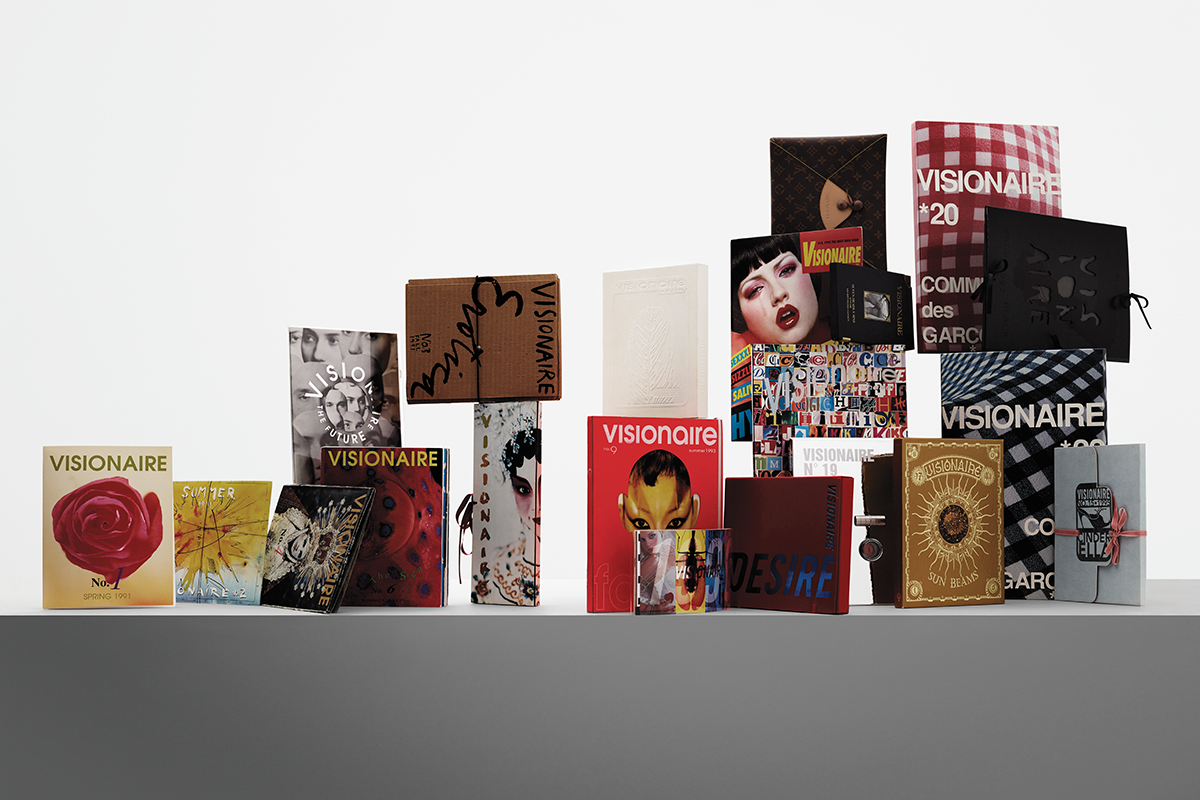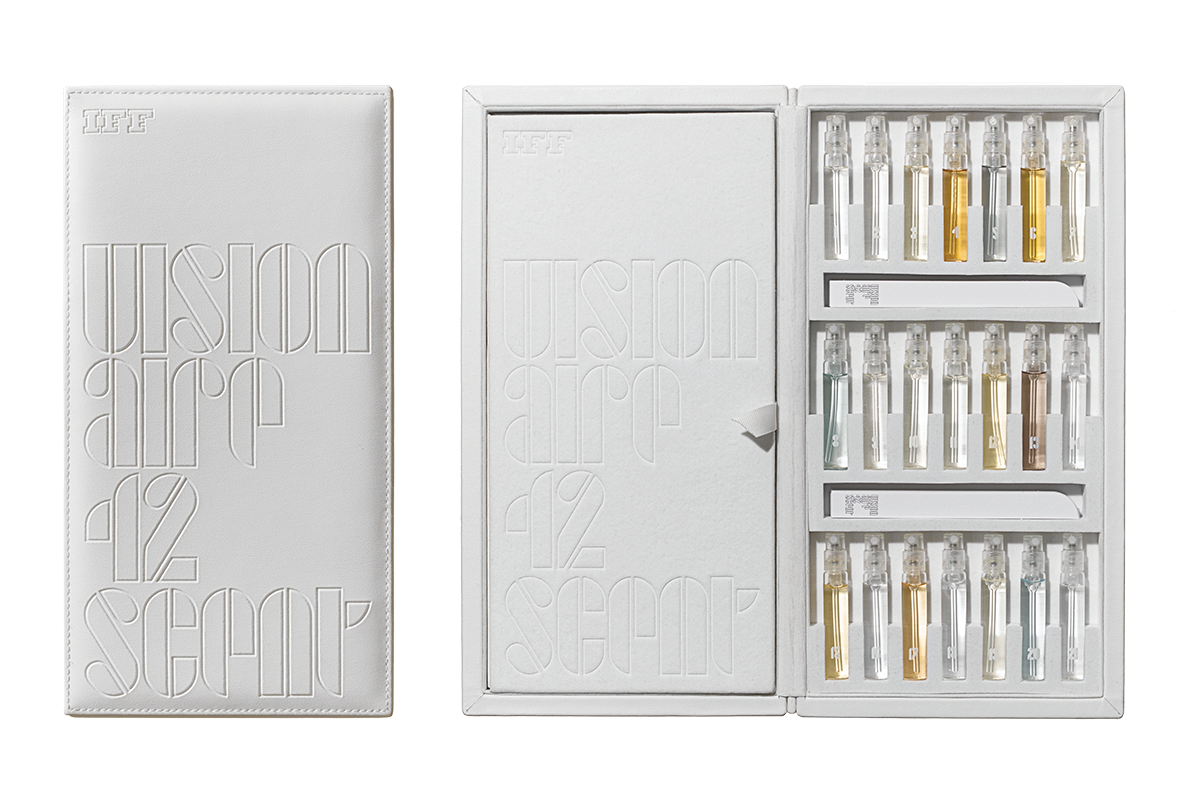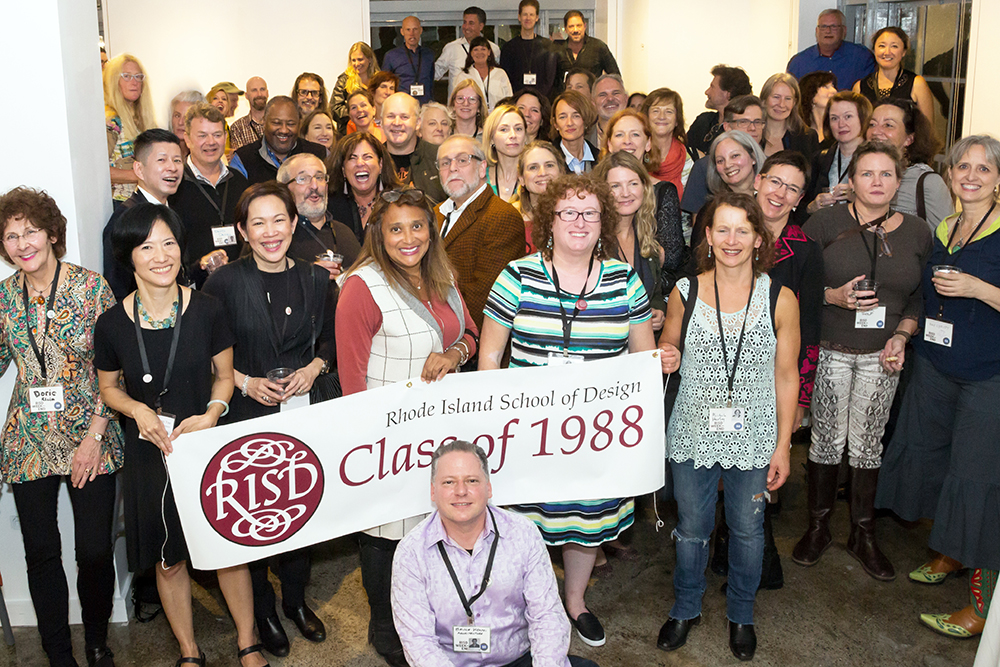
The Visionaries
The entire collection of acclaimed Visionaire magazine lands at the Fleet Library.
Greg Foley 91 AP had no idea he was creating a cultural time capsule.
In the beginning, he was merely a recent RISD graduate making something cool with friends around a dining room table in New York City. But the difference between that art project and the many others born of burgeoning talent and youthful confidence is that the friends happened to be magazine maven Stephen Gan, model Cecilia Dean and makeup artist extraordinaire James Kaliardos.
And the product became Visionaire magazine, the barrier-breaking, trend-setting, publishing marvel that combined fine art, fashion, commerce and brand identity with its first issue in April 1991.
Early this year, Foley gifted all 69 issues of Visionaire to RISD’s Fleet Library.
“It is clear now, looking at the impossibly brilliant and creative pieces that redefined the meaning of the medium, that Foley played an integral part in a defining moment for magazines,” says Margot Nishimura, RISD’s dean of libraries.
“RISD’s Fleet Library now has every issue of Visionaire magazine.”
The first chapter of this story of luck, talent and fearlessness began in Austin, where Foley grew up. The summer before he was to set off for RISD he attended a friend’s party and saw issues of Details magazine scattered about. This was when Details was still an insider’s guide to the New York City art and fashion scene, when its tagline was still “We go out so you don’t have to.” Foley flipped through the pages detailing the city’s electrifying nightlife scene and thought “Wow, someday.”
As an avid follower of fashion and pop culture who read magazines like The Face, ID and Arena, Foley decided to major in fashion. He became great friends with fellow apparel design major, Karen Park 90 AP, who went on to marry the renowned artist and designer Jean-Paul Goude. She had interned at Details and suggested that Foley do the same.
“I went to work for editor Stephen Gan. I did all the clothing returns from shoots. I modeled in photo shoots. Gan and I created our own special effects for layouts before Photoshop existed. I hand-cut little silhouettes of Polaroid prints and Gan rephotographed them on pins above backgrounds,” he says.

Foley kept in touch with Gan and would stay with him and his then partner, Kaliardos, when he visited New York City. So when Details was bought by Condé Nast in 1990 and Gan got a severance, he started his own magazine and enlisted Foley to help while he was still a senior at RISD. “They made this thing on the fly. We started something that was really off kilter and free form. And then it snowballed,” Foley says.
The launch of Visionaire was announced in a brief item in The New York Times and $40 subscriptions were offered for the quarterly publication. It was also available at Rizzoli bookstores. It quickly sold out. The fashion sect knew Gan and he knew all the top players. He enlisted highly regarded photographers Bill Cunningham, Steven Meisel and Bruce Weber as initial contributors—as well as other photographers who weren’t yet the icons they are today, but were quickly climbing. “We were the first people in the States to publish Mert Alas and Marcus Piggot. Inez and Vinoodh and Mario Testino and Steven Klein worked with us. All of these photographers that are now the top photographers in the world were just getting established,” says Foley.
The team made another issue and another, each redefining what a magazine could be, including the seven-foot-tall “Larger Than Life” issue. Ideas were fueled by sophisticated concepts based on a production technique or a print technique and propelled by basic notions like color. Issue 7 was all black. Issue 11 was all white and inkless and embossed.
By about the tenth issue the Visionaire crew had found a place to house their offices, a little mews building—a former carriage house—that was behind their printer in the SoHo neighborhood. They started doing brand work, ad campaigns and logo design, and consulting on the side to help fund the operation. Visionaire also started to work with major brands who would help pay for the production of forth-coming issues.
“There was no advertising, but Gan was canny enough to take sponsorships that helped increase our budget, which he did very quietly at first. I think the eighth issue was sponsored by Esprit, although we didn’t call it out,” says Foley.
The budget kept increasing as more and more brands decided to join ranks with the magazine.

Sponsorships became louder, like when Louis Vuitton designed a satchel for issue 18 and Levi’s wrapped issue 31 in a denim jacket.
Sometimes the brands came to Visionaire wanting their eyeballs and their audience, and other times the team went to brands to help them execute an inkling of an idea. “We had the dream of doing a scent issue and we were able to partner with International Flavors and Fragrances who could make the fragrances and we could bring the print to it. We knew that the best collaborations were the ones where we could use our strengths and rely on them for theirs,” says Foley. This particular issue, number 42, had 21 tiny vials of perfume included, and each scent was paired with images and a theme, such as “cold” and “success.”
The successful partnerships Gan and his team brokered ironically allowed for an independence rarely experienced in print publications. Visionaire was able to exist with total creative freedom and to offer that same luxury to all of its contributors. “We could tell people, ‘Whatever you want to give us, we can publish. This is noncommercial and nobody will tell you no,’” says Foley.
As the issues became more intricate and elaborate, the timeline became more fuzzy. No longer was Visionaire on any sort of dictated schedule. It had turned into limited edition publishing. In 1999, Gan started V magazine. If Visionaire was couture, this was the ready-to-wear collection.
In 2003, Gan launched VMan magazine. At this point, Foley had found his footing in a myriad of creative positions from album cover design to jewelry design to starting fashion collectives to fine art to branding work to children’s book author to teacher. He was made a partner at V magazine and VMan.
“We were helping to establish a new form of media collaboration. When I look back, Visionaire bridged the gap between fine art and fashion. Gan always included a fantastical mix of high, low, drag, fashion and art, and we did it at the highest possible level,” says Foley.
Foley now lives back in Austin with his wife and three children. He and his wife founded the body care brand Esker and Foley’s latest graphic novel for children, Dex Dingo: World's Best Greatest Ever Inventor, is out this September.
Words by Abby Bielagus. Photos by Greg Foley.



